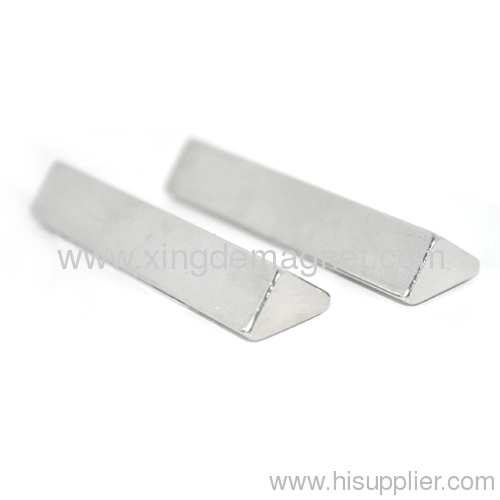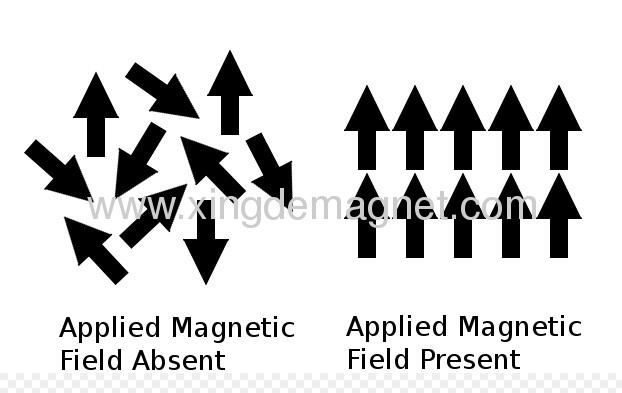
|
Ningbo Xingde Magnet Co., Ltd.
|


| Definition | |
|---|---|
| χ | the magnetic susceptibility; the influence of an applied magnetic field on a material |
| M | the magnetic moments per unit volume |
| H | the macroscopic magnetic field |
| B | the magnetic field |
| C | the material-specific Curie constant |
| µ0 | the permeability of free space. Note - in CGS units is taken to equal one.[24] |
| g | the Landé g-factor |
| J(J+1) | the eigenvalue for eigenstate J2 for the stationary states within the incomplete atoms shells (electrons unpaired) |
| µB | the Bohr Magneton |
| kB | Boltzmann's constant |
| total magnetism | is N number of magnetic moments per unit volume |
| Material | Curie Temperature (K) |
|---|---|
| Iron (Fe) | 1043 |
| Cobalt (Co) | 1400 |
| Nickel (Ni) | 631 |
| Gadolinium (Gd) | 292 |
| Dysprosium (Dy) | 88 |
| MnBi | 630 |
| MnSb | 587 |
| CrO2 | 386 |
| MnAs | 318 |
| EuO | 69 |
| Iron(III) oxide (Fe2O3) | 948 |
| Iron(II,III) oxide (FeOFe2O3) | 858 |
| NiOFe2O3 | 858 |
| CuOFe2O3 | 728 |
| MgOFe2O3 | 713 |
| MnOFe2O3 | 573 |
| Y3Fe5O12 | 560 |

